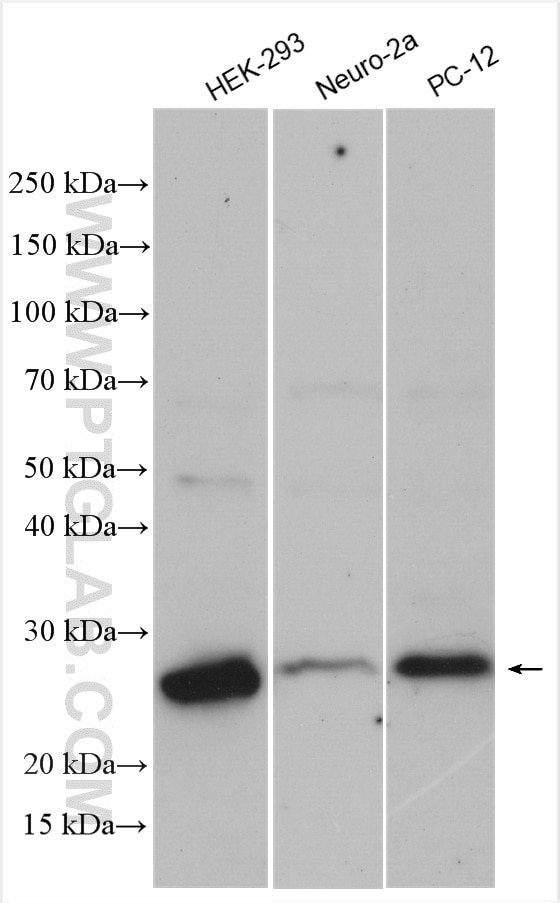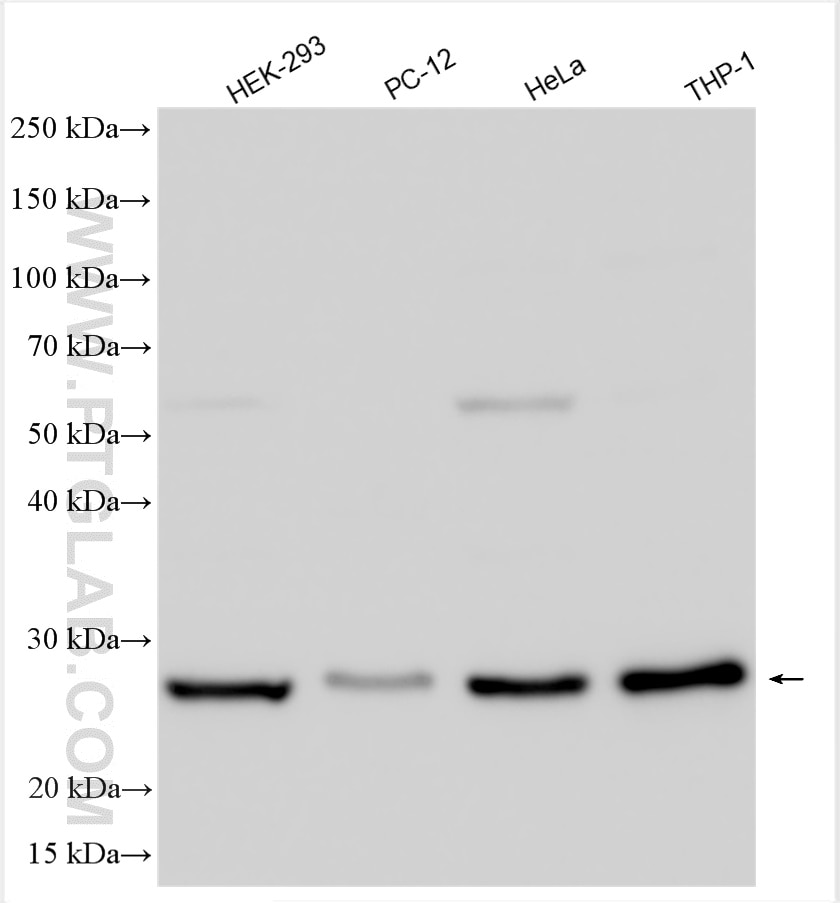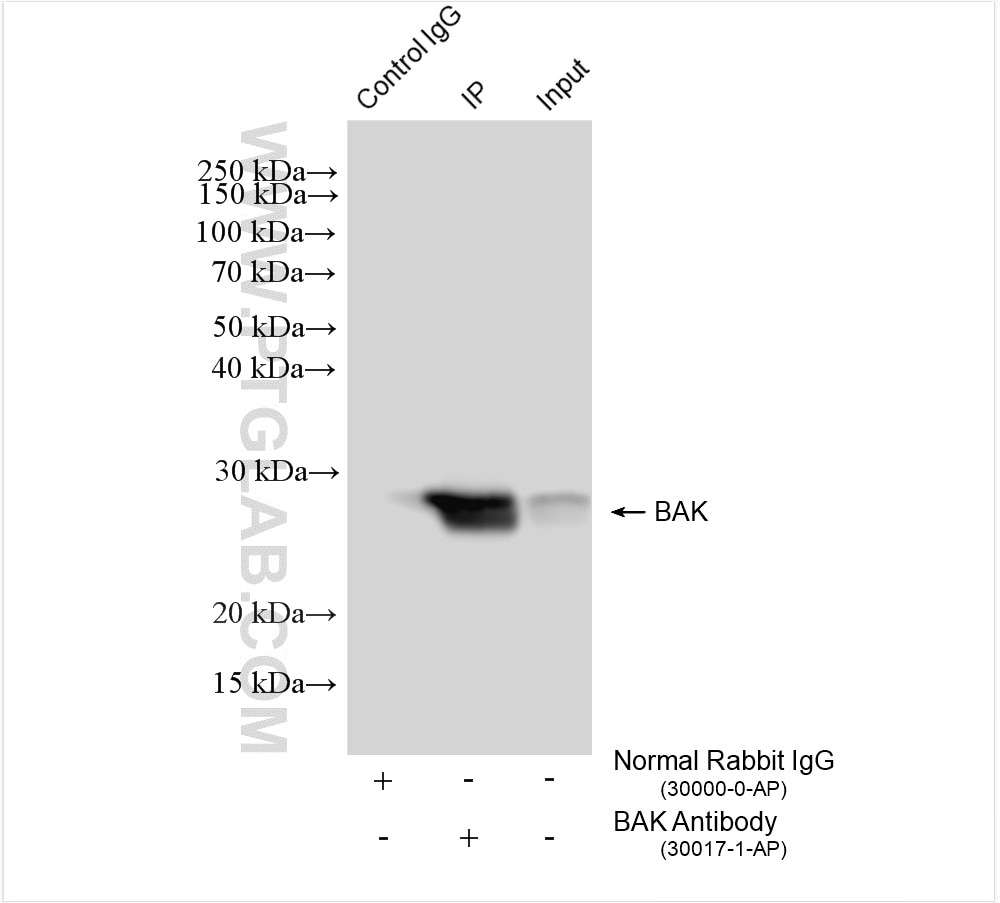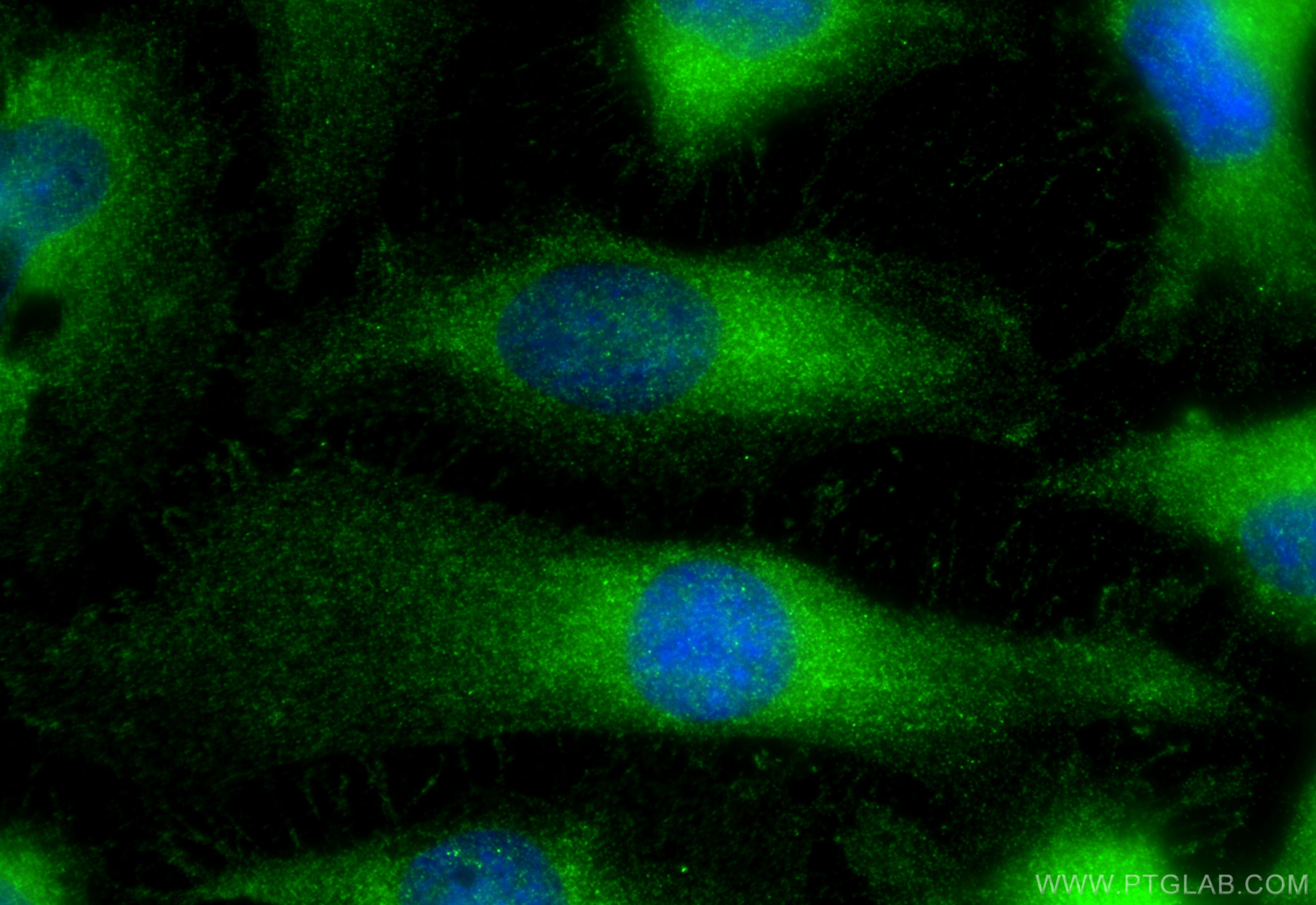Tested Applications
| Positive WB detected in | HEK-293 cells, Neuro-2a cells, PC-12 cells, HeLa cells, THP-1 cells |
| Positive IP detected in | HEK-293 cells |
| Positive IF/ICC detected in | HeLa cells |
Recommended dilution
| Application | Dilution |
|---|---|
| Western Blot (WB) | WB : 1:500-1:2000 |
| Immunoprecipitation (IP) | IP : 0.5-4.0 ug for 1.0-3.0 mg of total protein lysate |
| Immunofluorescence (IF)/ICC | IF/ICC : 1:200-1:800 |
| It is recommended that this reagent should be titrated in each testing system to obtain optimal results. | |
| Sample-dependent, Check data in validation data gallery. | |
Published Applications
| WB | See 2 publications below |
Product Information
30017-1-AP targets BAK in WB, IF/ICC, IP, ELISA applications and shows reactivity with human, mouse, rat samples.
| Tested Reactivity | human, mouse, rat |
| Cited Reactivity | rat, duck |
| Host / Isotype | Rabbit / IgG |
| Class | Polyclonal |
| Type | Antibody |
| Immunogen |
CatNo: Ag27958 Product name: Recombinant human BAK protein Source: e coli.-derived, PET28a Tag: 6*His Domain: 1-124 aa of BC004431 Sequence: MASGQGPGPPRQECGEPALPSASEEQVAQDTEEVFRSYVFYRHQQEQEAEGVAAPADPEMVTLPLQPSSTMGQVGRQLAIIGDDINRRYDSEFQTMLQHLQPTAENAYEYFTKIATSLFESGIN Predict reactive species |
| Full Name | BCL2-antagonist/killer 1 |
| Calculated Molecular Weight | 23 kDa |
| Observed Molecular Weight | 23-25 kDa |
| GenBank Accession Number | BC004431 |
| Gene Symbol | BAK1 |
| Gene ID (NCBI) | 578 |
| RRID | AB_3086211 |
| Conjugate | Unconjugated |
| Form | Liquid |
| Purification Method | Antigen affinity purification |
| UNIPROT ID | Q16611 |
| Storage Buffer | PBS with 0.02% sodium azide and 50% glycerol, pH 7.3. |
| Storage Conditions | Store at -20°C. Stable for one year after shipment. Aliquoting is unnecessary for -20oC storage. 20ul sizes contain 0.1% BSA. |
Background Information
The protein encoded by this gene belongs to the BCL2 protein family. BCL2 family members form oligomers or heterodimers and act as anti- or pro-apoptotic regulators that are involved in a wide variety of cellular activities. This protein localizes to mitochondria, and functions to induce apoptosis. It interacts with and accelerates the opening of the mitochondrial voltage-dependent anion channel, which leads to a loss in membrane potential and the release of cytochrome c. This protein also interacts with the tumor suppressor P53 after exposure to cell stress.
Protocols
| Product Specific Protocols | |
|---|---|
| IF protocol for BAK antibody 30017-1-AP | Download protocol |
| IP protocol for BAK antibody 30017-1-AP | Download protocol |
| WB protocol for BAK antibody 30017-1-AP | Download protocol |
| Standard Protocols | |
|---|---|
| Click here to view our Standard Protocols |
Publications
| Species | Application | Title |
|---|---|---|
J Virol Duck Tembusu virus NS3 protein induces apoptosis by activating the PERK/PKR pathway and mitochondrial pathway | ||
Biochem Pharmacol Targeting STING alleviates pyroptosis of bladder epithelial cells and ameliorates bladder fibrosis in neurogenic bladder |










